Ricardo Valencia, General Manager of Tierras de los Andes, attended this important event organized by the Lima Chamber of Commerce, which brought together representatives from the public and private sectors, as well as civil society, with the aim of reflecting on gender equality in the workplace, business sustainability, and the importance of preventing workplace sexual harassment (WSH).
These types of spaces allow for the sharing of experiences, learning from other sectors, and committing to real actions that transform workplaces into more equitable, safe, and sustainable environments.
This dialogue aimed to reflect and generate proposals on three key issues in the workplace: gender equality, business sustainability, and the prevention of workplace sexual harassment (WSH).


Likewise, during this event, the book “Between Speech and Action: Revealing the Hidden Costs of WSH in Private Companies in Peru” was presented, authored by Mg. Arístides Vara Horna. This publication analyzes the impact of workplace sexual harassment (WSH) on business profitability and reveals the hidden costs this issue generates within organizations.
Among the most relevant findings are alarming figures that show how WSH not only violates human rights but also directly affects productivity, safety, and the economic sustainability of companies.
Additionally, the event featured discussion panels focused on best practices in the implementation of the Peruvian Technical Standard on Gender Equality and the experiences of collaboration between public and private sectors and civil society to build safe, inclusive, and violence-free workplaces.
Tap water in Peru is not considered safe for direct consumption, especially for tourists. Although water is treated in some urban areas, factors such as old pipes and potential contamination make it inadvisable to drink without prior purification.
It is recommended to drink bottled water, but make sure it is sealed. If you don’t have access, you can boil the water for a few minutes or use purification tablets or portable filtration systems.
Many hotels offer complimentary bottled water in the rooms, and some have purified water dispensers in common areas. Higher-end establishments may even have internal filtration systems. Hotels with certifications such as ISO 22000, TourCert, or Safe Travels usually follow strict water management protocols for both consumption and food preparation.
Consuming poorly treated or contaminated water can lead to various illnesses, mainly gastrointestinal. These conditions show specific symptoms that should be identified promptly to prevent complications. Main symptoms include acute or persistent diarrhea, abdominal pain and cramps, nausea and vomiting, fever, fatigue or general weakness, headaches, or general discomfort.
For these symptoms, it is best to stay hydrated and drink oral rehydration solutions or fluids with electrolytes to replace losses. Avoid self-medication; some medications could worsen the condition if not prescribed by a professional. If symptoms persist, consult a doctor or visit the nearest healthcare facility.
Avoid drinking tap water; a safe way to stay hydrated is by drinking bottled water from trusted brands and ensuring the seal is intact.
If bottled water is not available, boil water for at least a few minutes; another option is to use purification tablets or portable filtration systems.
Be cautious when consuming raw foods and ice; avoid salads, unpeeled fruits, and beverages with ice in places where water quality is uncertain. Carry a purification system if you plan to visit rural areas or do outdoor activities. Consider bringing a portable water filter or purification tablets to ensure access to safe drinking water.
In Peru, the tap water supplied through the public system is not considered completely safe for direct consumption, especially for visitors or those not accustomed to local conditions. This is due to several structural and sanitary factors. Many cities have old or poorly maintained pipe networks, which can lead to contamination through leaks or breaks. In rural and peri-urban areas, access to treated drinking water is limited.
In many cases, people rely on natural sources like rivers, springs, or wells, which do not always have adequate purification systems. Despite regulatory efforts, water supply system supervision is not always effective or consistent across the country.
Therefore, both visitors and locals are advised to avoid drinking tap water without purification and to opt for bottled or certified treated water.

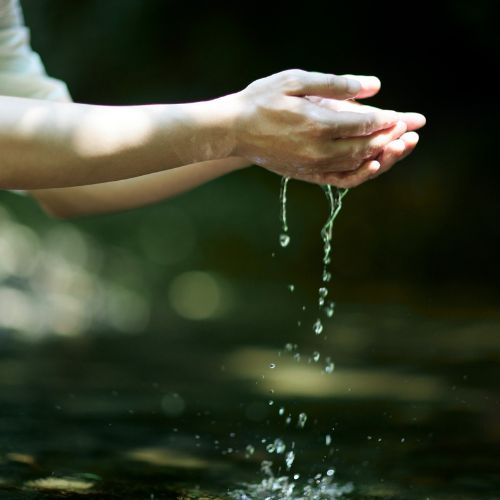
Consuming poorly treated or contaminated water can lead to various illnesses, mainly gastrointestinal; these conditions show specific symptoms that should be identified early to avoid complications.
Main symptoms include acute or persistent diarrhea, abdominal pain and cramps, nausea and vomiting, fever, fatigue or general weakness, headaches, or general discomfort.
If you experience these symptoms, stay hydrated, drink oral rehydration solutions or electrolyte fluids to replace losses; avoid self-medication, as some drugs may worsen the condition if not prescribed. It is best to consult a doctor; if symptoms persist, visit the nearest healthcare facility.
Hotels and restaurants in Cusco that cater to tourists are generally prepared to provide safe drinking water, but it is essential to take basic precautions and choose reputable or well-reviewed establishments.
Many hotels offer complimentary bottled water in rooms, some have purified water dispensers in common areas, and higher-end establishments may have internal filtration systems. Hotels with certifications like ISO 22000, TourCert, or Safe Travels usually follow strict protocols regarding water management, both for drinking and food preparation.
Tourist-focused restaurants use purified or bottled water to prepare food, beverages, and ice. Boiled water is also commonly used for cooking, and ice is typically made with safe water. Disinfectant solutions or purified water are used for washing raw foods. However, in lower-category establishments, it’s best to avoid raw salads or unpeeled fruits; in informal or street food venues, the risk is higher, so avoid ice if its source is unknown.

Cusco is a highly touristic city, which means all credit cards are accepted, with Visa and MasterCard being the most common. Access to credit cards has significantly improved in recent years, both for residents and visitors.
ATM machines are now generally considered one of the best ways to withdraw money throughout Cusco, including the Sacred Valley and Machu Picchu. You can withdraw either US dollars or the local currency (Peruvian soles). It is recommended to carry US dollars to avoid extra fees. Keep in mind that bank hours are Monday to Friday from 9:00 a.m. to 6:00 p.m., and Saturdays from 9:00 a.m. to 1:00 p.m.; banks are closed on Sundays. Banks usually offer the lowest exchange rates.
Don’t forget that authorized agencies usually have platforms that accept various payment methods such as Visa, MasterCard, Diners Club, and PayPal.
In Cusco, it is easy to find ATMs from banks like BCP, BBVA, Interbank, and Scotiabank, especially in central areas like Avenida El Sol. This makes it convenient to withdraw cash whenever needed.
Although credit cards are widely accepted in hotels, restaurants, and tourist-oriented shops, many local markets and small businesses only accept cash. If you plan to explore local culture, it’s recommended to carry some cash to avoid inconvenience.
Using credit cards to plan and book a trip from Cusco to Machu Picchu is quite accessible, although it’s important to consider some specifics to avoid problems.
In the imperial city of Cusco, cash withdrawals are available 24/7 thanks to the availability of ATMs.
Several banks operate ATMs in the city, providing continuous access to cash for visitors. Some of the banks with ATMs in Cusco include:
To fully enjoy your stay in Cusco, it’s advisable to always carry some cash, as not all services accept cards.
For example, authorized agencies usually have platforms that accept various payment methods such as Visa, MasterCard, Diners Club, and PayPal. As for transportation, train tickets with companies like Peru Rail and IncaRail can be purchased online using credit or debit cards. Additionally, buses from Aguas Calientes to Machu Picchu accept card payments both online and in town.
However, the official website of the Ministry of Culture only accepts Visa cards affiliated with the Visa Secure system. If your card is not registered, the payment will likely be declined, as this system is designed to protect cardholders from fraud.
Yes, you can pay for guide services and tours with a card. Many agencies allow online bookings and payments using Visa, MasterCard, American Express, Diners Club, or even PayPal.
Regarding accommodation, in Cusco and Aguas Calientes, mid-range and upscale hotels and restaurants accept credit cards, with Visa and MasterCard being the most common.
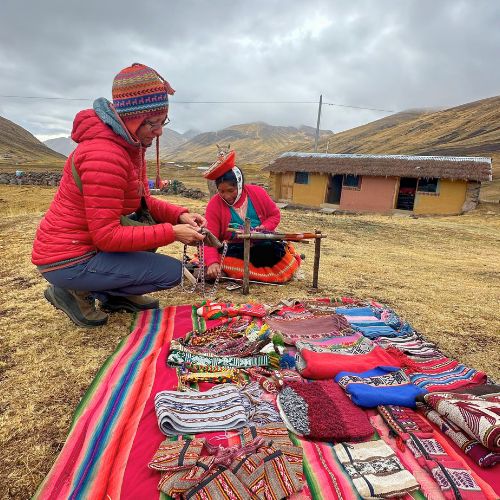
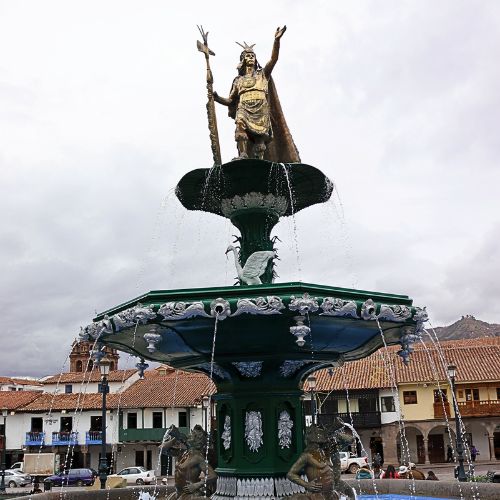
Although credit cards are widely accepted along the route from Cusco to Machu Picchu, it’s important to check payment options at each establishment and carry cash for places where cards are not accepted. In summary, having a credit card makes trip planning and execution easier, but carrying cash remains an essential precaution.
From January 22 to 26, the city of Madrid became the global tourism spotlight with the celebration of FITUR 2025, one of the most prominent international fairs in the sector. Our travel agency, Tierras de los Andes, is honored to be part of this global event where Peru presented its most comprehensive tourism offerings, showcasing its cultural, natural, and gastronomic wealth.
The opening of the fair was marked by the official launch of the Inti Raymi, one of the most iconic celebrations in Cusco, Peru. This launch initiated a series of significant presentations that, with the support of PROMPERÚ, included gastronomic activities and the promotion of the Route of the Andean Baroque. Our agency is present at stand 15, emphasizing the importance of these events in promoting cultural and sustainable tourism in our country.
FITUR 2025 served as the ideal platform to showcase the best of Peru to the world. Our participation focused on promoting the unique experiences we offer tourists, including adventure activities, trekking, and, of course, local gastronomy. Our agency is proud to be part of this global strategy that positions Peru as an unmissable tourist destination, offering authentic experiences, adventure, trekking, astrotourism, and rural tourism of exceptional quality for those seeking to connect with the true essence of our country.
Additionally, the fair strengthened Peru’s image as a diverse and sustainable destination, with a particular focus on the active participation of local communities and the empowerment of women in the tourism sector. Through these efforts, we aim to provide not only unforgettable experiences but also contribute to the economic development of the country’s most representative regions.
With the support of FITUR 2025, we remain committed to bringing the best of Peru to the world, ensuring that every tourist who chooses us enjoys an authentic, enriching, and sustainable experience. Our agency continues to work passionately to offer you the best of Peru, because every journey is an opportunity to discover, learn, and share the richness of our land.
For more information on our tour packages throughout Peru.
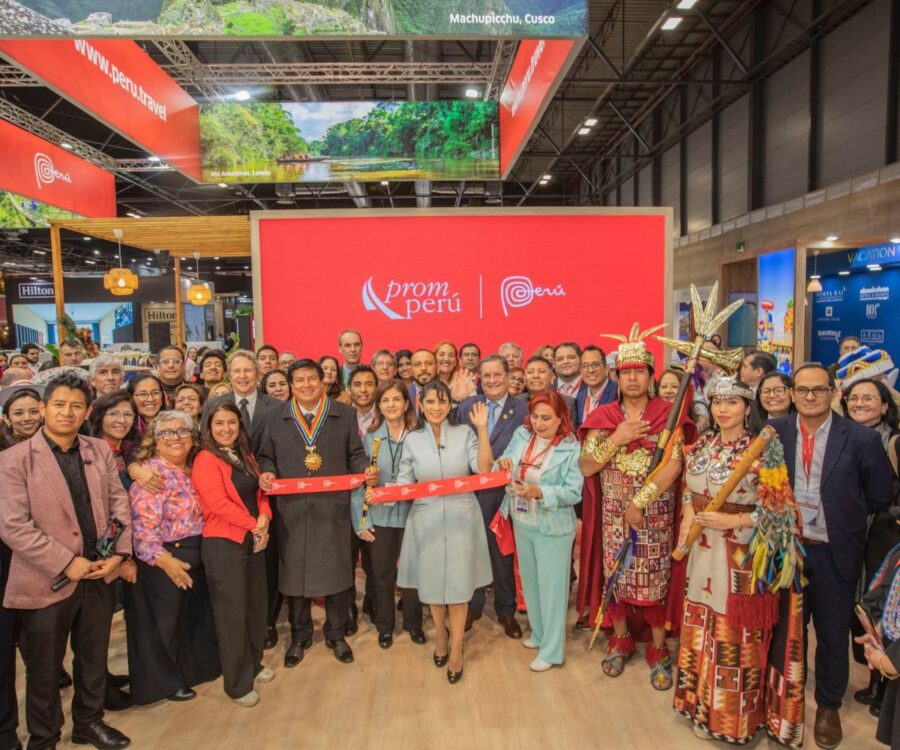
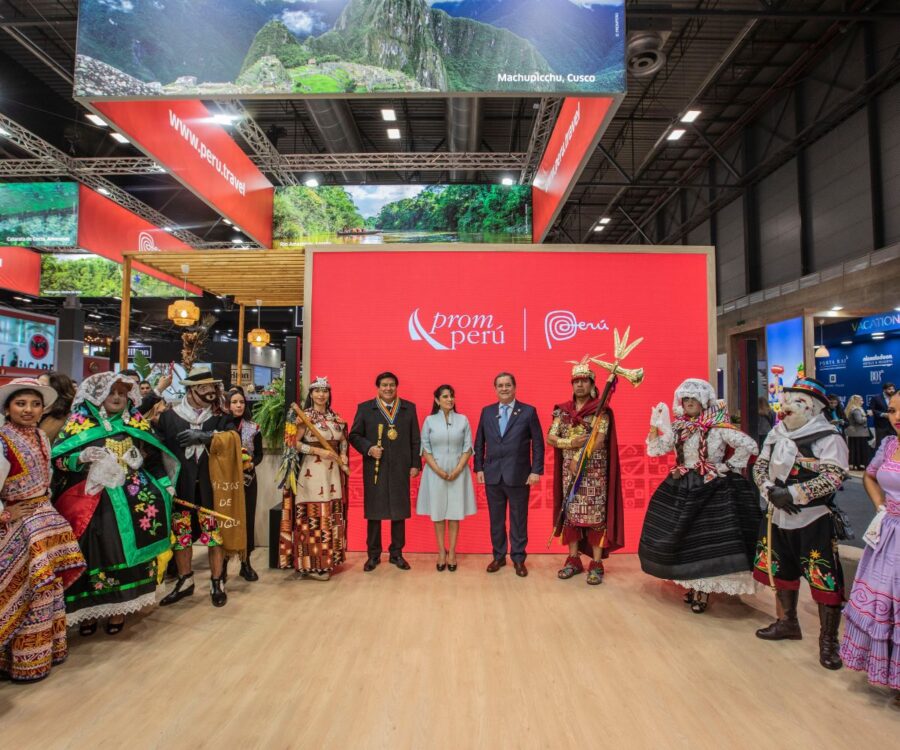
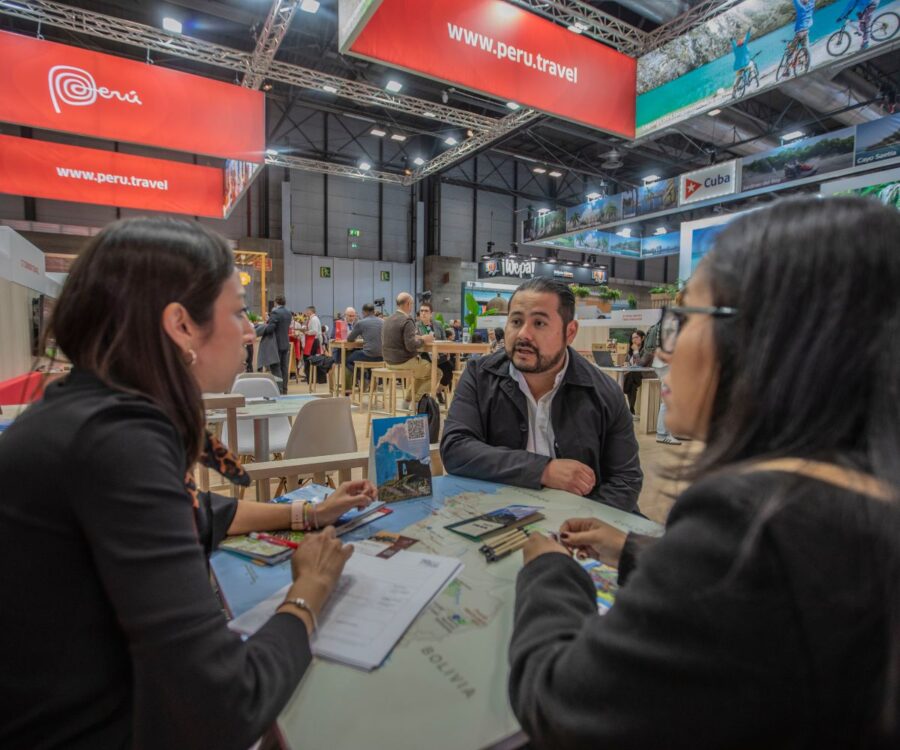
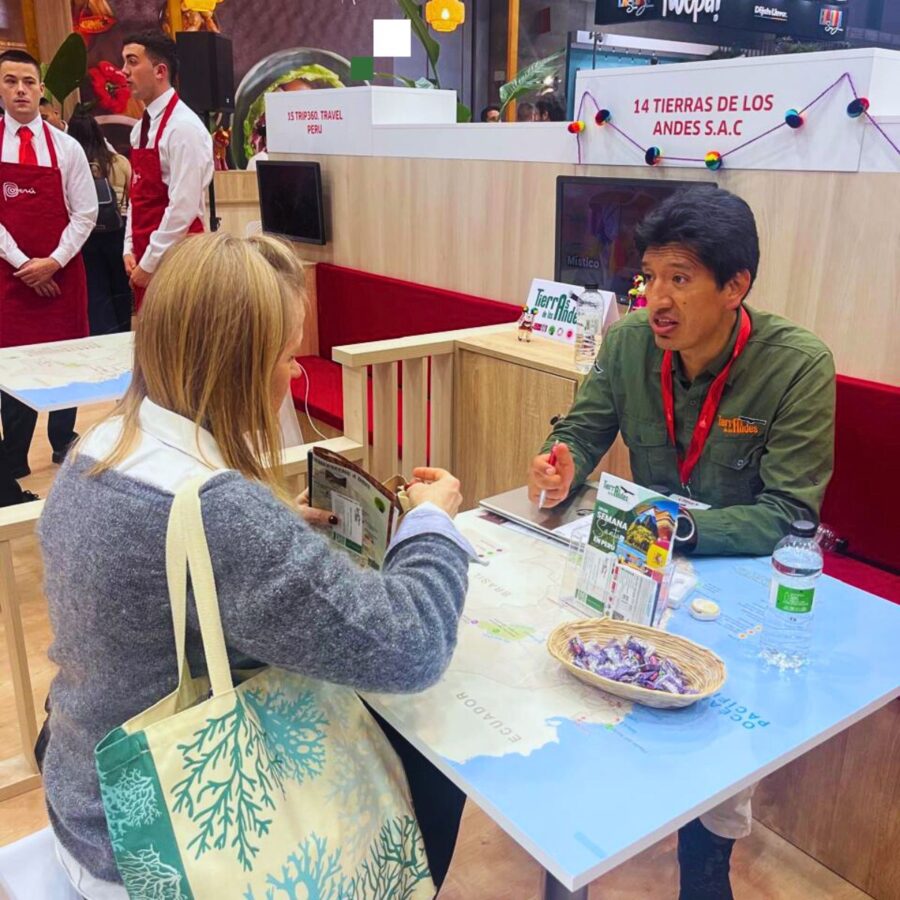
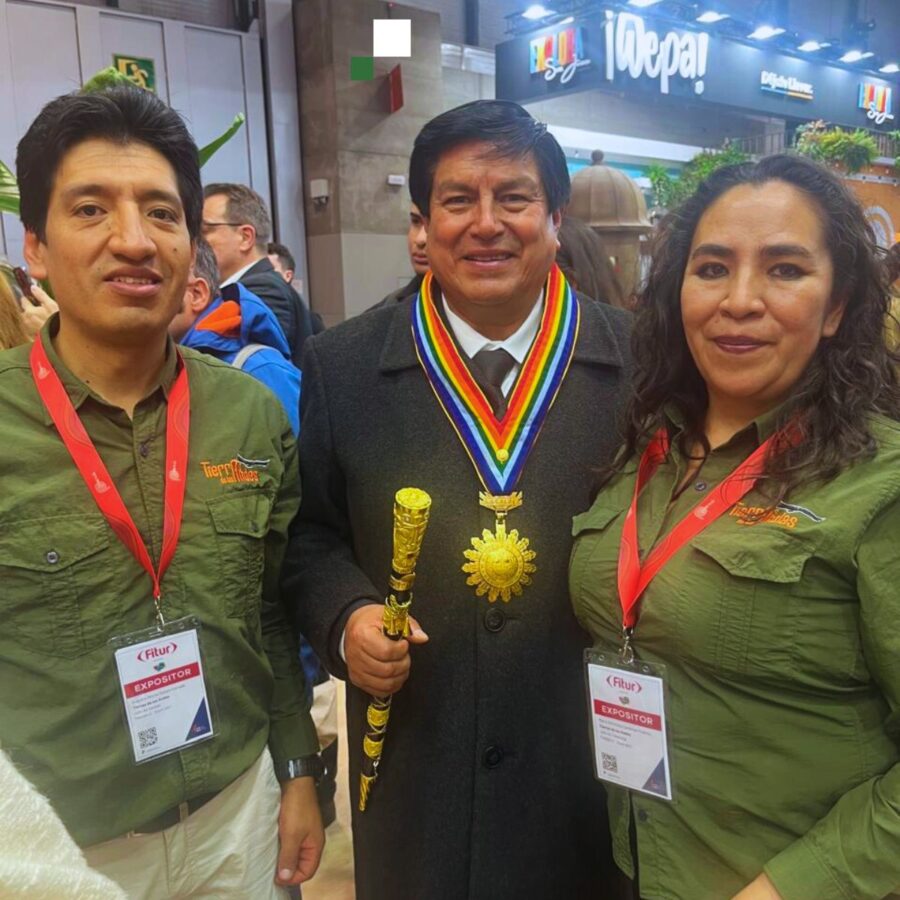
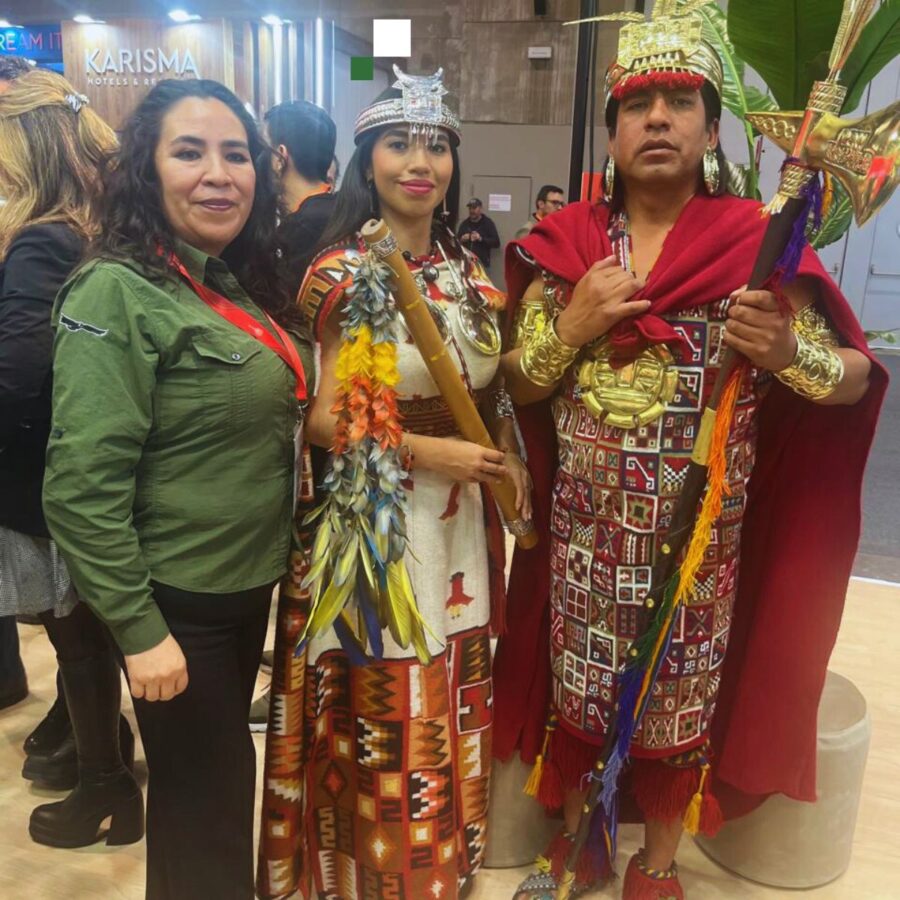
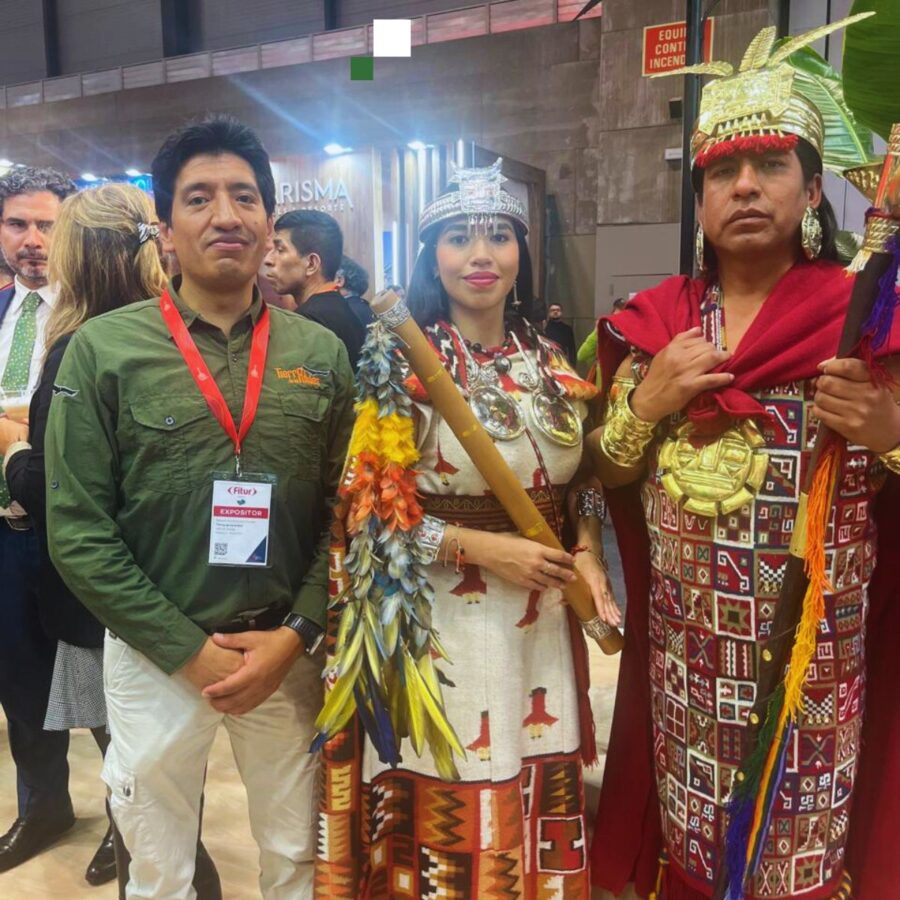
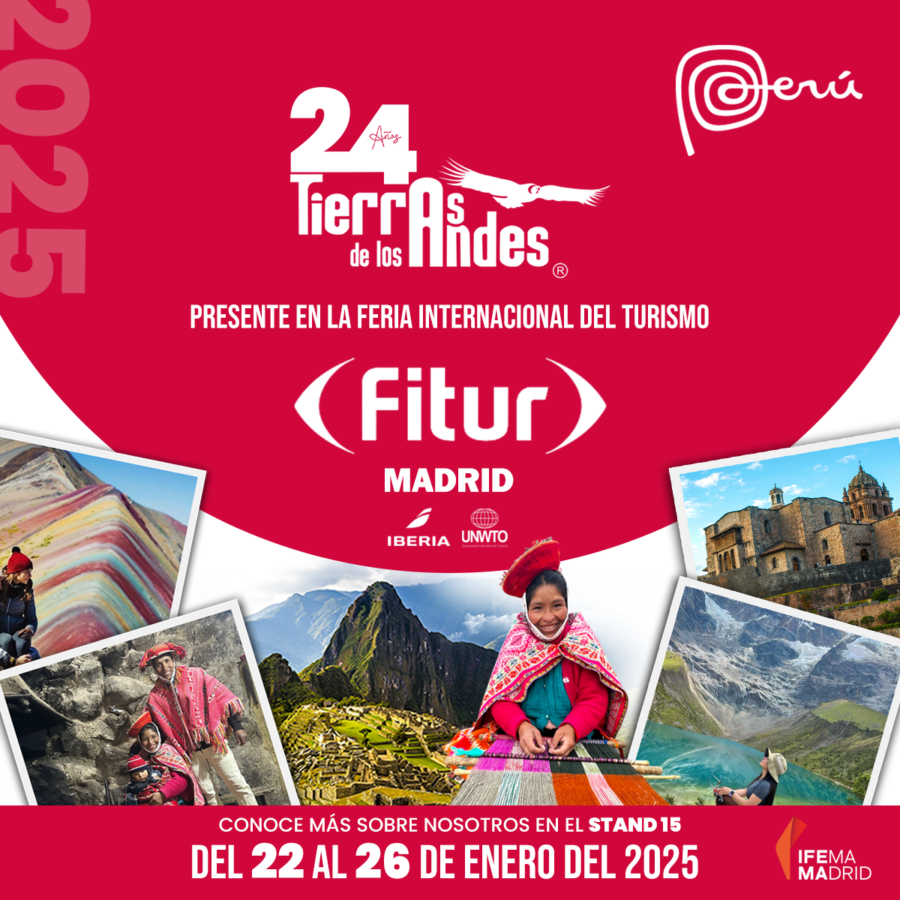
Peru has won three awards at the 2024 World Travel Awards, excelling in gastronomy, culture, and tourist attractions; these accolades highlight the diversity and richness of the experiences the country offers, solidifying Peru as one of the most attractive destinations in the world.
The global event that celebrates the best of tourism worldwide has once again awarded Peru in 2024; showcasing that our ancestral culture, gastronomy, and natural attractions are unique, making it a leader in the tourism sector in several categories.
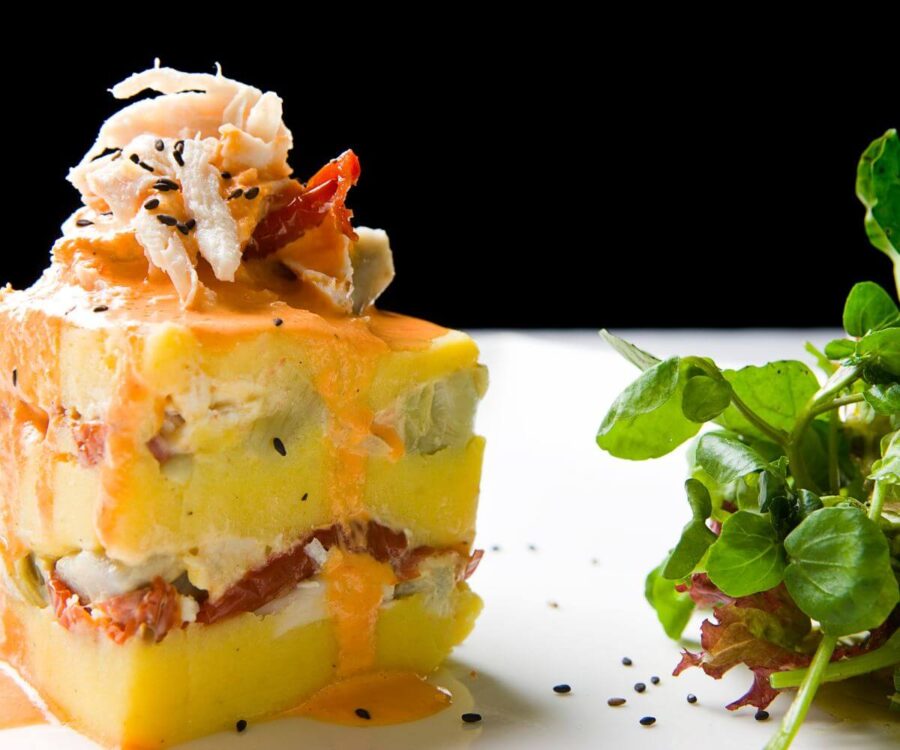
Peruvian gastronomy remains the best in the world, once again earning the title of World’s Leading Culinary Destination at the 2024 World Travel Awards, holding this spot for 12 years; the combination of native ingredients and ancestral techniques has gained international recognition in recent years, attracting tourists from all over the globe.
Machu Picchu remains the world’s leading tourist attraction for the fifth consecutive year. The seventh wonder of the world has claimed the top spot due to its historical legacy, attracting thousands of travelers and reaffirming its place as one of the most visited destinations globally.
This year, our country has been recognized as the World’s Leading Cultural Destination for the twelfth consecutive year and also as the World’s Leading Culinary Destination; these awards emphasize the global impact of Peruvian gastronomy, known for its variety and tradition, as well as its dances, festivities, and customs.
Choose your new destination in Peru, every site will amaze you with its richness. Contact us at Phone +51 984 550 165 or by email at Email ventascusco@terandes.com and let us take care of everything for you.
The legend of Paititi, the golden city of the Incas filled with riches, has captivated explorers and archaeologists for centuries. This historical enigma raises the question of whether it is just a myth or if there is some truth to the stories surrounding it. Join us to discover what is known about this site and the modern expeditions seeking to unveil its secrets.
Paititi is a legendary Inca city, considered by many to be a refuge that was hidden by the Incas to protect it from Spanish conquerors. For many centuries, its existence has been the subject of mystery and speculation, fueling the search of adventurers and archaeologists.
The Inca worldview and their territorial expansion, especially in Bolivia, regarded it as a strategic refuge to preserve their legacy in case of threat. Paititi became a hidden city where the last descendants of the Incas would have taken refuge.
Vaca de Castro was one of the first to document rumors, noting that it would be hidden in an inaccessible region of the Amazon. Although many considered his accounts exaggerated, his writings fueled subsequent expeditions in search of the golden city.
Garcilaso de la Vega linked the legend to the spirit of resistance of the Incas after the Spanish conquest. In his writings, he suggested that Inca gold and riches were hidden in the city to protect their cultural and spiritual heritage.
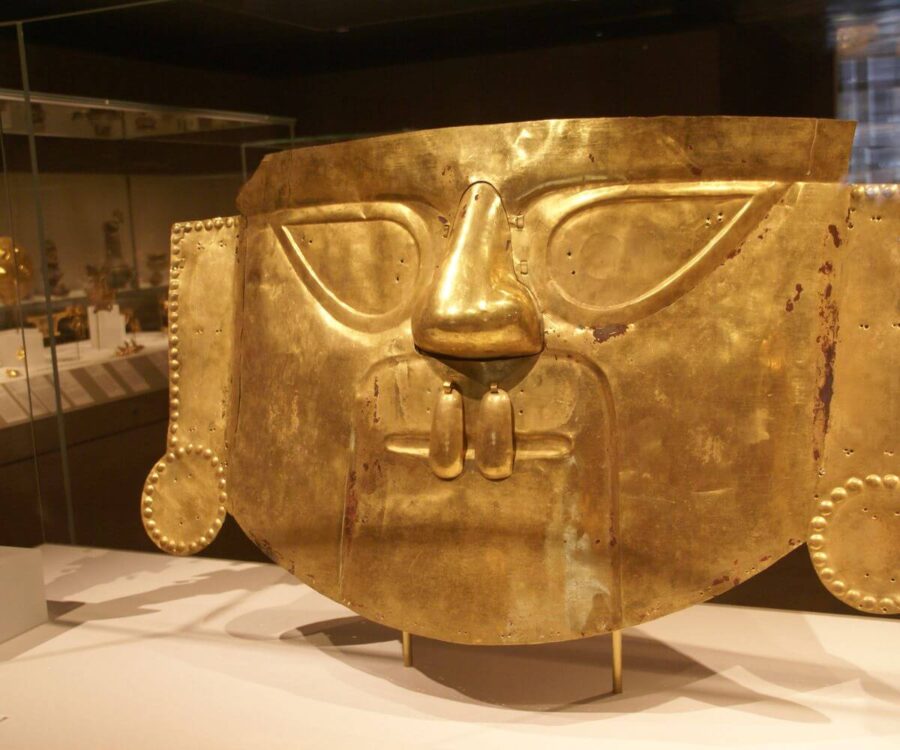
Another chronicler, Diego Felipe de Alcaya, also contributed to the legend, recounting how the Incas had taken gold and treasures into the eastern jungles. According to Alcaya, the local indigenous people knew of the city but kept its location secret.
After the fall of the Inca Empire, survivors fled to remote regions, carrying their riches and traditions, which fueled the belief in the existence of Paititi as a final bastion of Inca resistance.
Various expeditions have ventured into the Amazon jungle in search of Paititi. Explorers and archaeologists, inspired by the legend, have tried to find the lost city without success.
One of the first Spanish conquistadors to explore the Amazon jungle, he did not find the golden city, but his expedition helped popularize the legend and attracted future explorers.
Anzúrez, a Spanish adelantado, spent much of his life searching and exploring uncharted regions. Although with few results, his accounts increased interest in the lost city.
Ñuflo de Chaves was a 16th-century explorer who sought Paititi in the Amazon, reinforcing the belief that the city was hidden in an inaccessible place, protected by jungles and mountains.
During this period, several expeditions searched in the Amazon, but many failed due to the harsh terrain conditions, which only increased the mystery.
He led one of the most documented expeditions, with encounters with local tribes and accounts of the region's wealth, which intensified fascination with the lost city.
Recio de León also searched for Paititi, but although he did not find it, he left important records on the region's geography and cultures.
The Jesuits played a key role in the search, gathering information about the Amazon and establishing missions. Their approach was more spiritual than material, contributing to the knowledge of the region.
They were explorers whose expeditions in the Amazon reinforced the legend, with stories of tribes speaking of a hidden city, protected by mountains and rivers.
These are legendary cities linked to the search for the famous place. It is believed that these cities, described by explorers and chroniclers, could be related to the same hidden region full of riches.
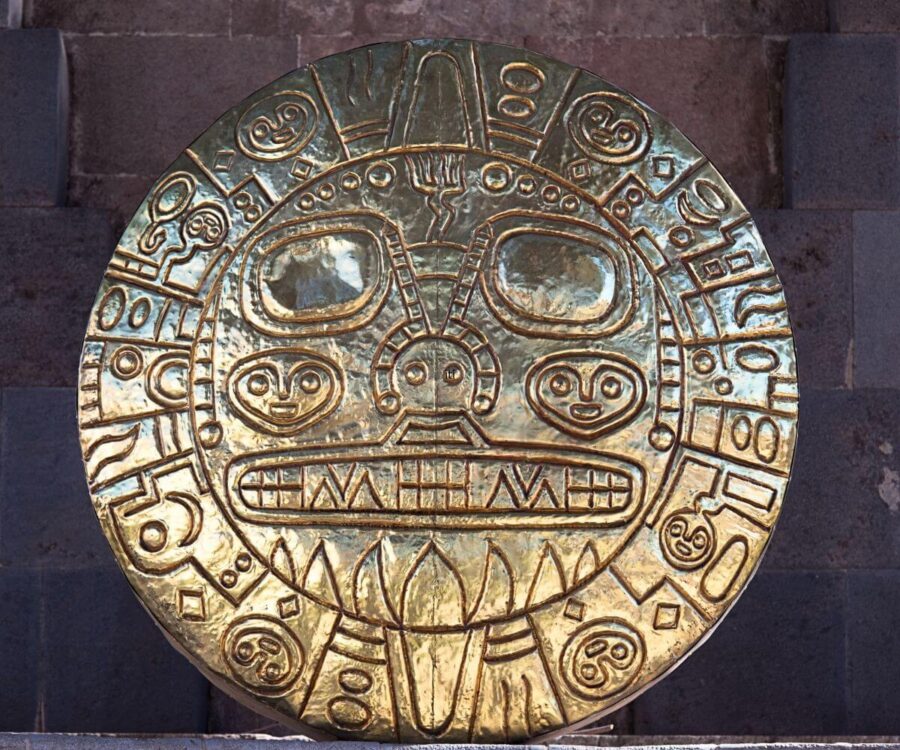
A famous legend of America, it is linked to Paititi, as both describe a city of gold protected by nature and accessible only to the bravest.
The Amazonian legends share similarities in describing rich and cultural cities hidden deep in the jungle.
There are various theories about its location, ranging from the Peruvian Amazon region to the mountains of Bolivia.
Researchers have identified areas of the Peruvian high jungle as possible locations, based on archaeological and technological studies that have revealed remains linked to the lost city.
Some theories suggest that it was looted before the arrival of the Spaniards, possibly by local tribes or the Incas themselves to protect their treasures.
It remains an enigma with multiple versions regarding its existence and location. Some stories portray it as a golden city, while others suggest it was a spiritual refuge for the Incas.
It is full of stories of spiritual guardians and even curses, the golden city continues to captivate the imagination of those who research it.
The wealth spoken of includes not only gold but also ancestral knowledge, cultural artifacts, and Incan traditions that could alter our understanding of this civilization.
The Nazca Lines, located in the Peruvian desert, are famous for their size, precision, and mystery. In this article, we will share with you their history, significance, and how to visit them. Don’t wait any longer to appreciate their majesty.
The Nazca Lines, located in the desert, are geoglyphs created between 500 B.C. and 500 A.D. by the Nazca culture. They represent animals, plants, and geometric figures; their size ranges from a few meters to over 200 meters. Although their exact purpose is unknown, some theories suggest religious, astronomical functions, or that they served as maps for water sources.
They were first documented in 1927 by Peruvian archaeologist Toribio Mejía Xesspe, but gained notoriety in the 1930s with the advent of commercial flights. Several researchers, such as María Reiche and Paul Kosok, suggested that the lines had astronomical functions, but their purpose remains a mystery.
These geoglyphs include figures of animals, plants, and geometric shapes, some over 200 meters in length. They are completely visible from the air and are notable for their precision and complexity.
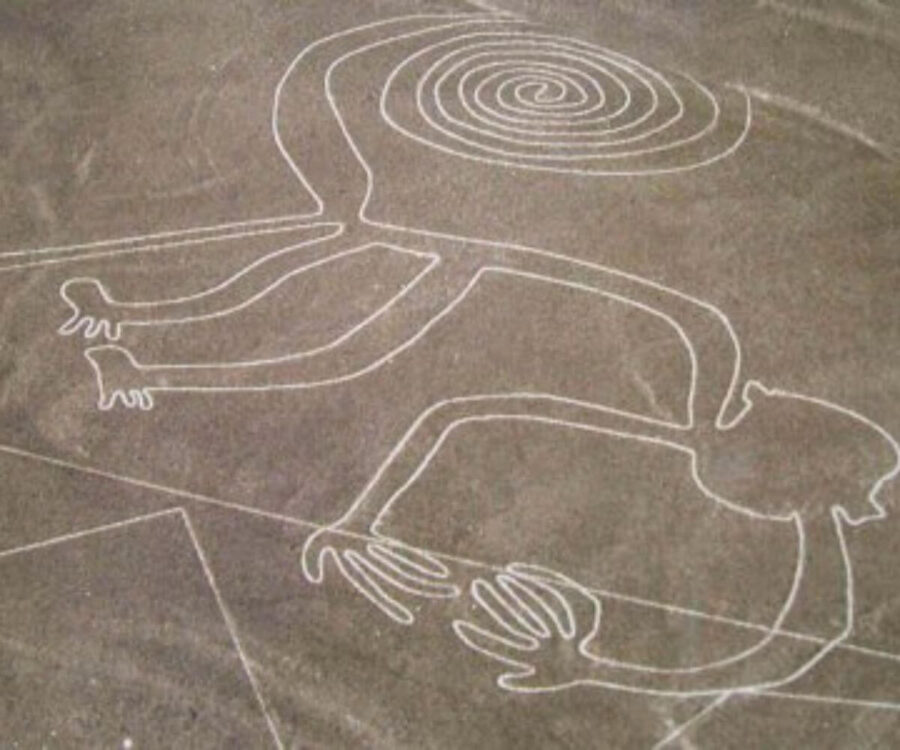
The Nazca Lines are located in the Ica region, between Nazca and Palpa, in a desert with a dry climate that has helped preserve them. The lack of rain and the stability of the terrain have allowed the figures to remain intact over time.
The best way to view the Nazca Lines is by flying over them in a small plane, with 30-minute flights that show the main figures. It is recommended to book in advance and choose certified operators for a safe experience.
Another option is the Nazca lookout, from where some figures can be seen, although it offers a limited view. If you want a more complete experience, you can combine the flight with a visit to the Antonini Museum, which provides information about the Nazca culture and the lines.
In recent years, the use of drones and satellite analysis has allowed the discovery of new geoglyphs in Nazca, expanding the catalog of known figures. These discoveries include representations of humans, animals, and previously unknown geometric shapes, which continue to generate interest in their purpose.
In 2020, Peruvian archaeologists discovered a 37-meter feline figure on a hill that had previously gone unnoticed. This and other recent discoveries highlight the importance of preserving and studying this cultural heritage.
The Nazca Lines demonstrate the skill of the Nazca culture, which removed the surface layer of the desert to create figures visible from afar. It is theorized that they used simple tools and ropes to maintain precision and proportions; moreover, the dry climate of the region has helped preserve the lines over time.
Over the years, various theories have been proposed to explain the purpose of the Nazca Lines. Below are some of the most prominent:
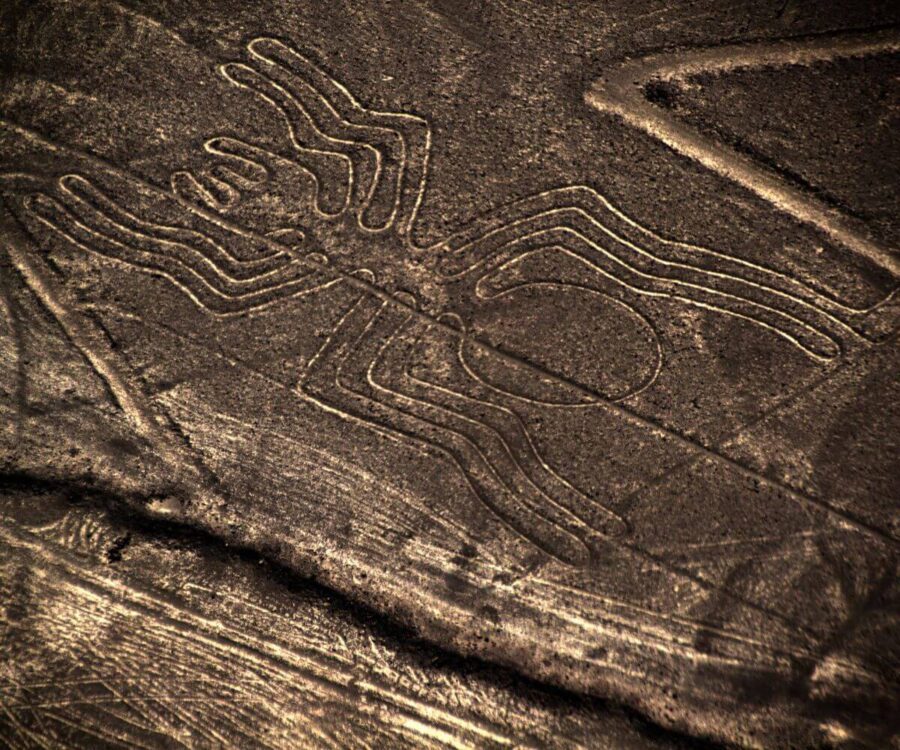
At one point, it was said that the lines were landing strips for extraterrestrials, a theory popularized in the 1960s, but it lacks scientific evidence and is rejected by the academic community.
Some researchers suggest that they were ceremonial pathways for religious rituals, connecting the population with their gods or natural forces, such as water. On the other hand, the figures, seen from the sky, may have been a way of communicating with celestial beings.
Another hypothesis suggests that they had a religious purpose, representing offerings to the gods or maps to guide spirits. This interpretation is based on the spiritual connection of ancient cultures with their natural environment.
One supported theory holds that they were an astronomical calendar, marking the positions of the sun, moon, and stars to predict seasonal and climatic events, as the patterns of the figures align with celestial phenomena, which supports this hypothesis.
Anthony Aveni and Helaine Silverman proposed that they were a system to organize social and territorial areas, marking ceremonial zones and symbolizing unity among communities. This highlights both their practical function and symbolic meaning.
There are many documentaries on this topic, but the most recommended one is the one produced by National Geographic, which combines stunning aerial footage with expert interviews. The visual content provides a unique and detailed perspective of the geoglyphs and their significance in human history.
Come to Peru and discover the beautiful Nazca Lines, as it is a place you cannot miss. Trust us and let us take you to these geoglyphs. Contact us at Phone+51 984 550 165 or by Emailventascusco@terandes.com. Don’t wait any longer!
If you're planning a trip within Peru or abroad, it's important to choose an airline that offers good fares, comfort, routes, and punctuality. Here are the top airlines:
Get more detailed information about each one:
It is one of the main airlines in the country, offering both domestic and international flights. Known for its extensive network of routes, punctuality, and variety of services.
Latam Airlines Peru has been key in connecting Peru to the world for over 20 years; it leads the local market with a modern fleet and strategic routes. Its history has consolidated it as one of the main airlines in the region.
It offers domestic flights between Lima and cities like Cusco, Arequipa, and Piura, as well as international routes to the United States and South America. It is a key option for those seeking comfort and efficiency in their travels.
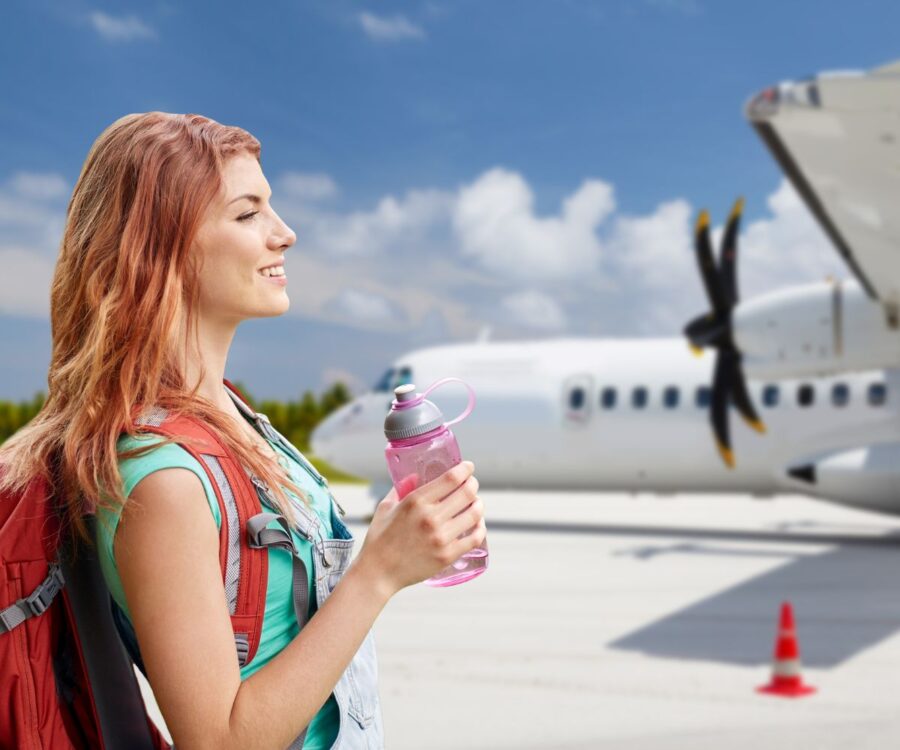
It provides services with in-flight entertainment, comfortable seats, and a variety of meal options. Its frequent flyer program, Latam Pass, is known for offering exclusive benefits to regular customers.
This is an airline that offers low-cost options for both domestic and international flights.
It is known for offering low-cost flights and has grown rapidly in the Peruvian market. The fares are competitive, and it has a business model that aims to make air travel more accessible without sacrificing safety or quality.
Its constant promotions and dynamic pricing allow access to affordable flights when booking in advance. It is a popular choice for those looking to save on travel.
It is recognized for its punctuality and efficient service, although its baggage policies are strict. It is an ideal option for short trips and low costs.
It offers both domestic and international flights. With a focus on affordable fares, it connects several Peruvian cities and destinations in South America at affordable prices.
It is a pioneer in the low-cost model, offering flights between cities like Lima, Cusco, Chiclayo, and Arequipa. Due to its competitive prices, it attracts thousands of travelers each year.
Viva Air Peru has forced other airlines to adjust their prices. Its focus on low fares, though additional services incur extra costs, still offers one of the most affordable base fares in the market.
It follows a simplified model where passengers only pay for what they need, such as baggage and seat selection. This approach is ideal for those traveling light.
Avianca is an international airline that offers both domestic and international flights from Peru, with an extensive network of routes across Latin America, the United States, and Europe.
Avianca is an airline with a long history that connects Peru to destinations on many continents, making it a popular choice for business travelers and tourists on long-distance flights.

The LifeMiles program allows travelers to earn points for flights and everyday purchases, offering benefits such as access to VIP lounges and upgrades. It is highly valued by frequent passengers.
Avianca offers a modern fleet with premium services, such as in-flight maintenance, gourmet meals, and spacious seats. It is ideal for those seeking quality in their flying experience.
Star Peru is a national airline offering flights to major destinations within the country, connecting several cities, with mostly affordable flights.
Star Perú focuses on key domestic destinations within the country, connecting cities such as Lima, Arequipa, and Piura. It is dedicated to offering affordable prices for domestic flights, with basic service and limited baggage and comfort options.
It specializes in regional routes and has a strong understanding of the local labor market, which gives it a competitive edge. It is known for its personalized service and commitment to passengers.
Passengers appreciate the friendliness of the staff and the punctuality of Star Perú’s flights. Although its planes are smaller, the airline provides efficient and reliable service.
ATSA Airlines primarily operates domestic flights to destinations such as Lima, Arequipa, and Cusco. It caters to regional travelers with basic and comfortable services.
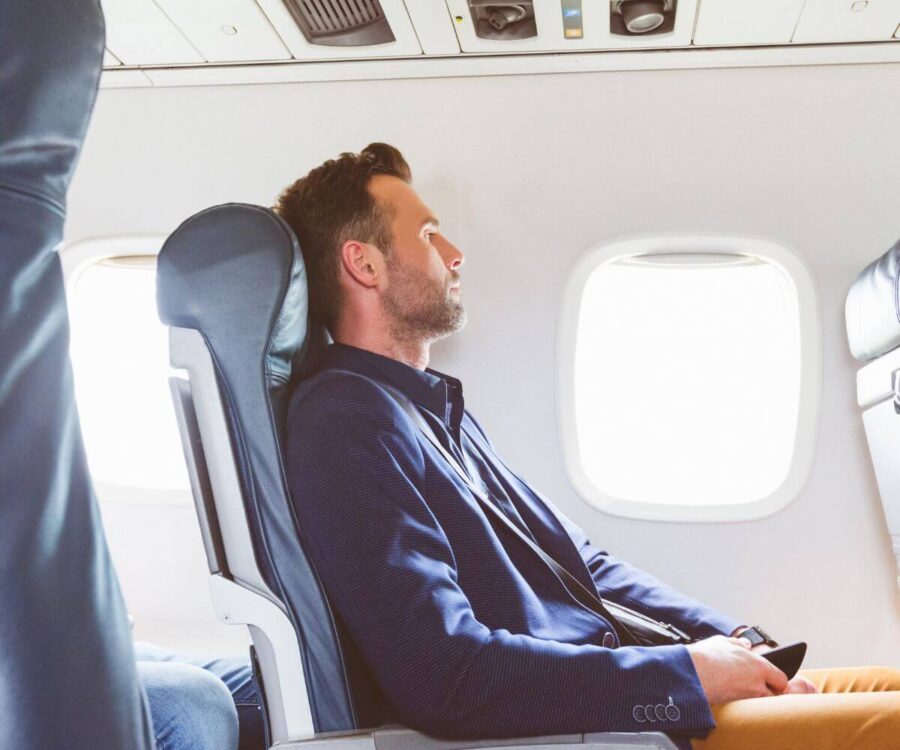
ATSA Airlines operates in remote regions of Peru, such as the Amazon, providing flights to destinations not covered by other commercial airlines. Its service is aimed at travelers who need access to these areas.
ATSA Airlines stands out for its high safety standards and punctuality, making it a reliable option for business or leisure travelers in remote regions.
It is the primary option for those traveling to the Peruvian jungle, distinguished by its commitment to sustainable development in the region.
JetSMART Peru is a company that includes additional services, attracting travelers who prioritize price over extras.
It operates with low cost, having adapted its international model to the local market, offering low prices and flexible options that have been well received by travelers.
JetSMART stands out for its fleet and the use of sustainable technologies to reduce its environmental impact, making it a preferred choice for travelers concerned about the environment.
JetSMART operates key routes within Peru and to international destinations, constantly expanding its coverage. Its strategy focuses on increasing frequencies and options for passengers.
The Andean condor, one of the largest birds in the Andes, is now endangered due to habitat loss and other threats. In Peru, this species can be observed in its natural environment, and there are now tours specifically for condor watching. If you want to experience new adventures and learn more about this bird, this guide is for you.
Peru is home to many birds, but the condor is one of the most outstanding due to its majesty while flying, especially because it does so at great altitudes, making it a very special animal. Consider the following:
The Andean condor (Vultur gryphus) has a wingspan of approximately 3.3 meters, and its weight ranges from 11 to 15 kilograms. It is distinguished by its shiny black plumage, a white collar that adorns its neck, and a characteristic fleshy crest found in males.
You can admire its flight in large dimensions, especially in the mornings when most of these animals take to the skies. You can observe them from strategic points designed for sightings.
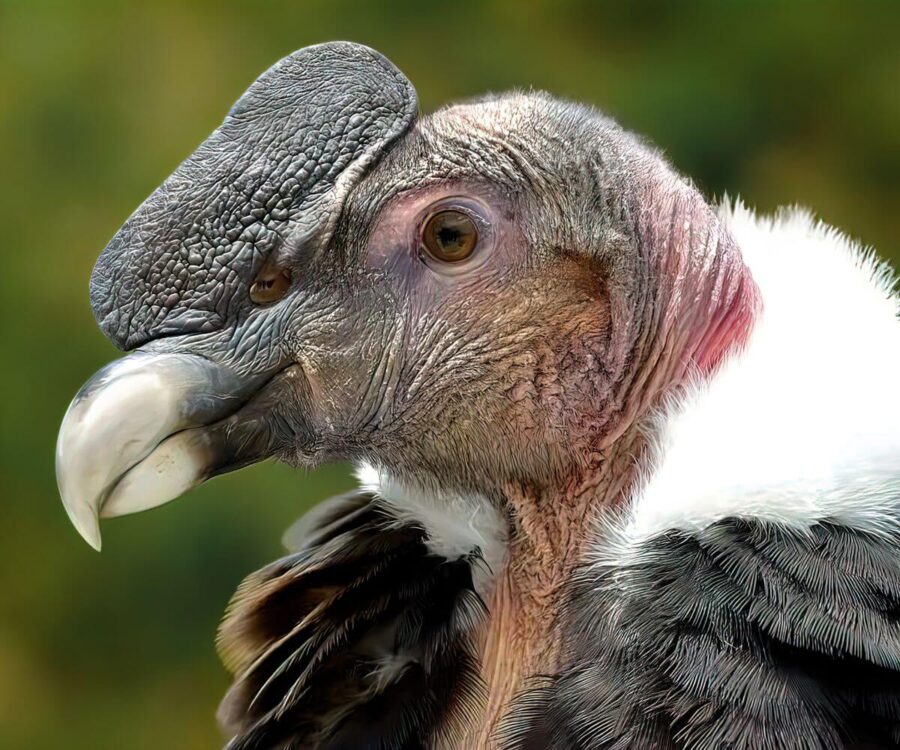
This bird inhabits the Andes Mountain Range, which spans several countries. In Peru, it is found in areas such as the Cañón del Colca and the Cañón de Apurímac, as these places offer the ideal conditions needed for the condor's survival. Nowadays, tours allow visitors to observe its natural habitat and learn about its conservation.
The condor feeds on carrion, playing a vital role as a cleaner of ecosystems. This habit makes it essential for large areas and wildlife populations that depend on it. If you visit the condor's habitat, specialized guides will explain how these animals glide (flight behavior) and other aspects of their behavior.
The Andean condor is classified as a "near-threatened" species globally and "endangered" in countries like Peru due to poisoning and hunting. The government is running educational campaigns to reduce human threats.
The Andean condor faces multiple threats, including:
Efforts to protect the condor include captive breeding programs to reintroduce them into the areas where they live and protected areas. This goes hand in hand with environmental education campaigns in Peru. In our case, Terandes supports these efforts through tours focused on education and sustainability.
The condor is essential to the Andean ecosystems, as it helps prevent the spread of diseases by consuming carrion. Moreover, its presence holds deep cultural significance in Andean traditions, where it is considered a symbol of power and spiritual connection.
There are many questions about the condor, such as how long it can live or what it eats. Here are some fun facts about this bird:
This bird, thanks to its long and strong wings, can glide for hours without flapping them, using air currents to reduce energy consumption. Places like the Cañón del Colca are ideal for observing this behavior, especially while enjoying the magnificent views.
In Andean culture, the condor represents the sky and the divine, forming part of the sacred trinity alongside the puma (the earth) and the serpent (the underworld). Its importance is reflected in various local traditions and festivities.
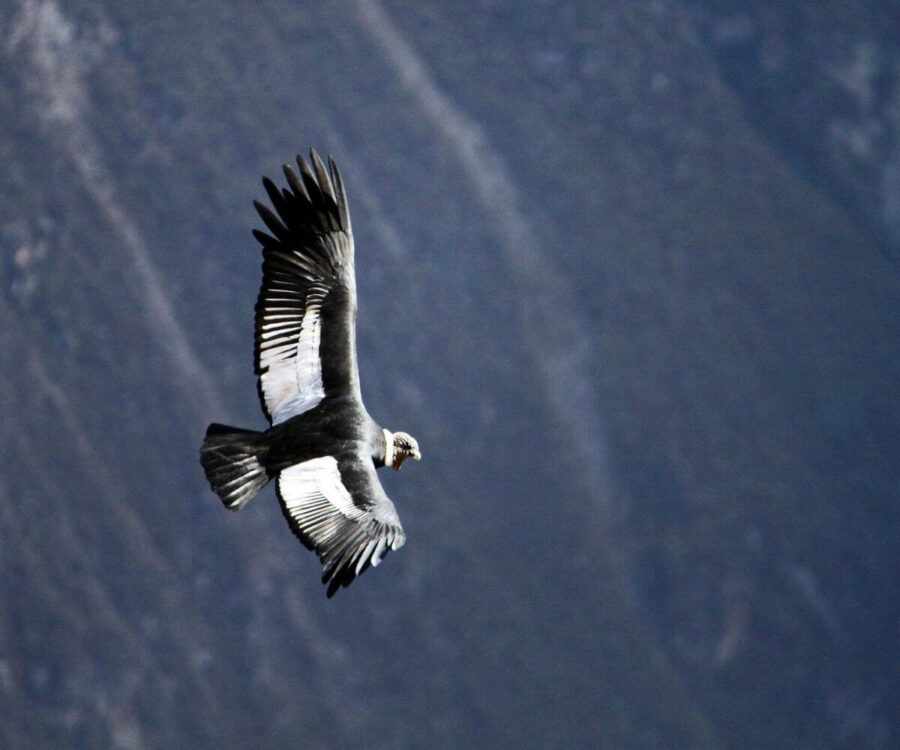
The condor can live up to 70 years, making it one of the longest-living birds. Interestingly, its reproduction is slow, as a pair of condors only raise one chick every two years, which poses a challenge to its conservation.
Conservation measures for the condor include the creation of protected areas, captive breeding programs, and awareness campaigns, among others:
In Peru, projects like "Cóndor Pasa" aim to monitor and protect wild condor populations. During our tours, we offer educational talks to inform visitors about the importance of these initiatives.
We support local measures to combat the illegal wildlife trade, which affects the region's biodiversity. The tours include visits to communities committed to sustainable practices and the protection of the condor.
With Terandes, you can support the preservation of this species by participating in responsible tours that benefit local communities promoting ecotourism.
To spot the Andean condor, places like the Colca Canyon and Apurímac Canyon are ideal, where you can observe their flight in their natural habitat.
1. Tour to Colca Canyon (Arequipa):
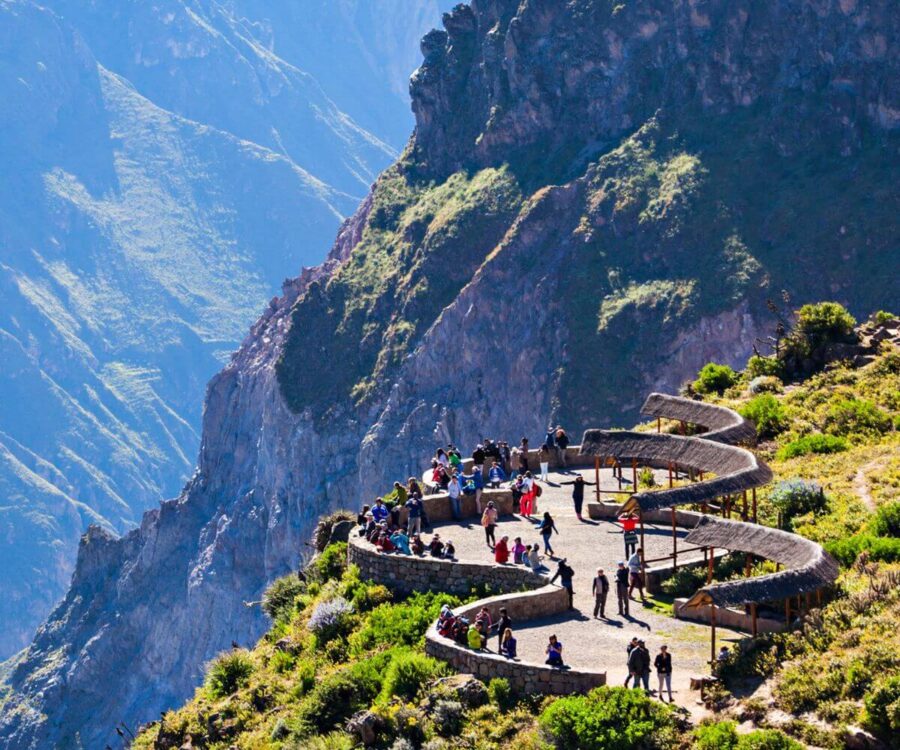
2. Tour to Apurímac Canyon (Cusco):
3. Private Tour to Natural Reserves:
The Andean condor is distributed across many countries, with areas like the Colca Canyon and Apurímac Canyon in Peru being home to the largest populations, where protection and monitoring programs are implemented.
The Colca Canyon is one of the main areas to observe, as it has a regular population of this bird and is easily accessible. Other highlighted areas include the Manu National Park, known for its rich flora and fauna.
Andean ecosystems are essential for their survival, providing the necessary resources for their existence. These ecosystems benefit not only the condor but also other species whose main source of life is these areas.
It is a colorful garment with earflaps, very traditional in the high Andean regions. Nowadays, it has gained significant international popularity because it has captured the world's attention with its unique design. This item is highly valued for its history and its handcrafted process, as it preserves an ancestral form. Now, get ready to discover the trends of Peru:
The Andean chullo originates from the Andes, where it is used as protection against the cold. Its traditional design is handwoven by people from rural areas.
The chullo dates back to Inca times, where it protected them from the cold; it also indicated the social status of the wearer. Today, it has evolved but remains a symbol of cultural identity. The chullo is appreciated as a fashion garment that maintains a connection to Andean culture.
It is primarily made with alpaca fiber, globally known for being soft, warm, cold-resistant, sustainable, and environmentally friendly. Additionally, it is a great choice for those seeking comfort.
Each chullo is a work of craftsmanship and dedication by Andean weavers, typically sold in shopping centers and some tourist locations.
The making of this item combines traditional techniques and manual skill. It begins with the selection and dyeing of alpaca fiber, followed by the weaving process that creates unique pieces. Some reflect traditions, experiences, flora, fauna, and more.
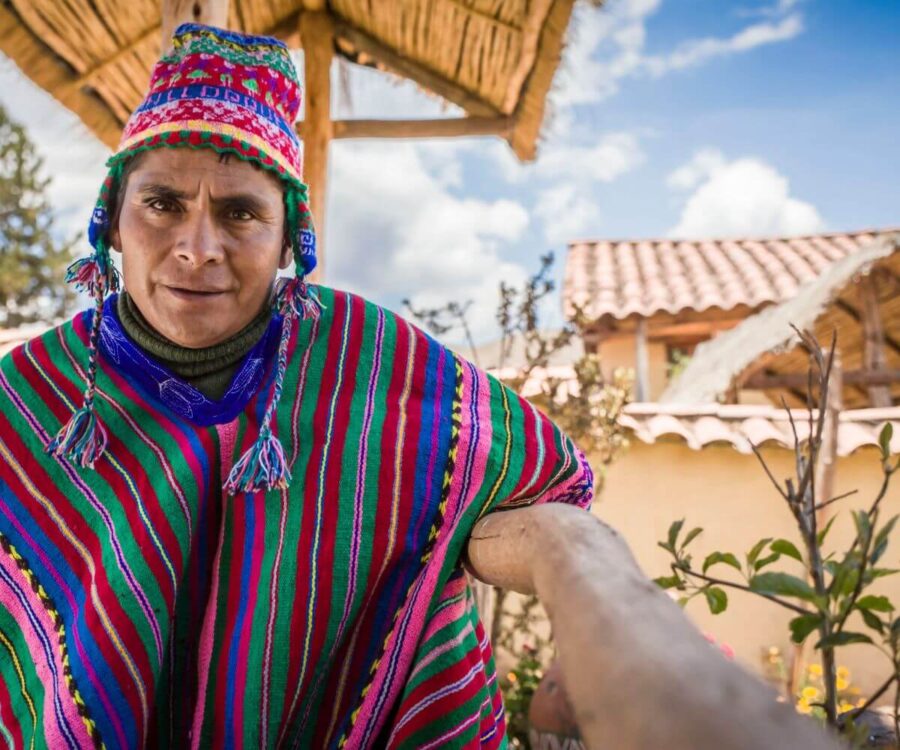
The chullo has been incorporated into fashion and high couture, being used by international designers in winter collections. Currently, it is a garment that combines culture and modern style.
Today, it has transcended its Andean origins to become a global trend, as international designers have incorporated it into their collections. This blend of tradition and modernity has allowed more people to discover the culture, supporting local communities in preserving their traditions.
Although it is associated with the cold, it is versatile as it can be worn in any season. The colorful designs make it a fashion statement for warm climates, while in winter, it provides warmth. The essence of this garment is that it pairs well with other clothing.
It is a piece that represents traditions and supports the craftsmanship of Peruvian communities. When you choose a chullo, you not only preserve a tradition but also acquire a unique accessory, embracing a style rooted in ethics and culture.
You can purchase it directly from communities or artisanal stores that support fair trade. This way, you obtain a quality product while supporting local artisans.
Its roots lie in pre-Inca cultures, but over time, it has evolved, incorporating unique characteristics.
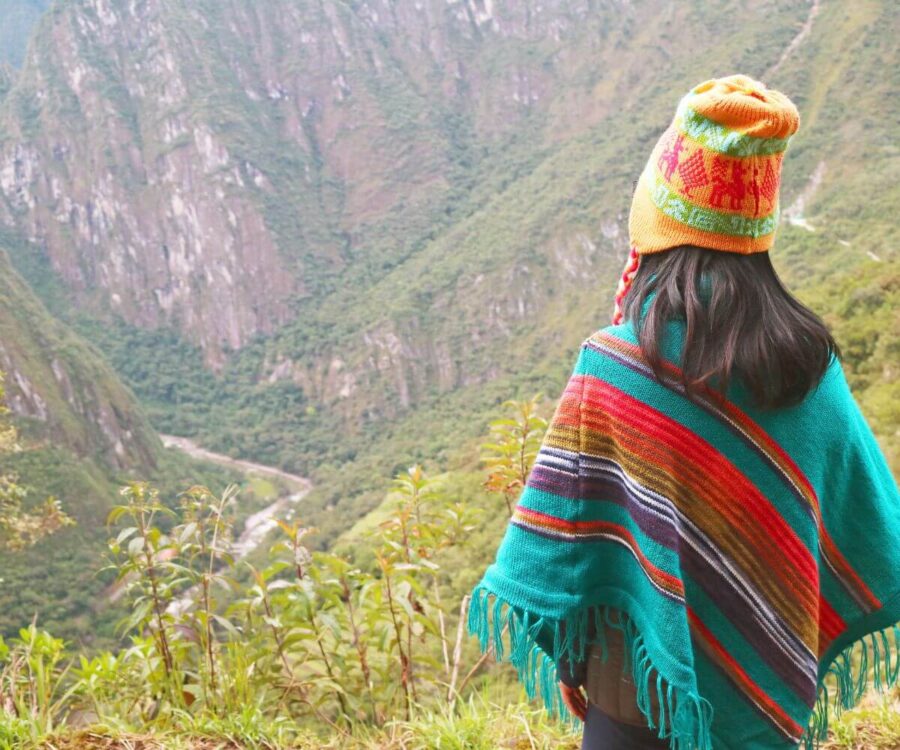
It is a symbol of Andean identity, showcasing the connection of communities with their environment and worldview. The colors and designs convey beliefs, traditions, and customs passed down from generation to generation, serving as a cultural heritage.
The designs often carry meanings related to sacred animals or natural elements such as mountains and rivers, delivering a cultural message to preserve and share Andean culture.
In the last decade, designers like Dior have highlighted its artistic and cultural value. This inclusion has elevated the chullo to be recognized as a work of art.
The main crafting regions are where Andean communities keep the traditions of artisanal weaving alive.
It is mainly crafted in regions like Cusco, Puno, and Ayacucho, where communities continue to preserve traditional techniques. A significant portion of the sale of artisanal products is still maintained in these areas.
It is more than just a garment for the cold; it is a symbol of Andean culture and a global fashion accessory. It has endured over time in Peru to honor the legacy of our ancestors.
It’s time to embark on new adventures. Don’t doubt that Peru is one of the best options. Come and learn more about its ancestral richness.
